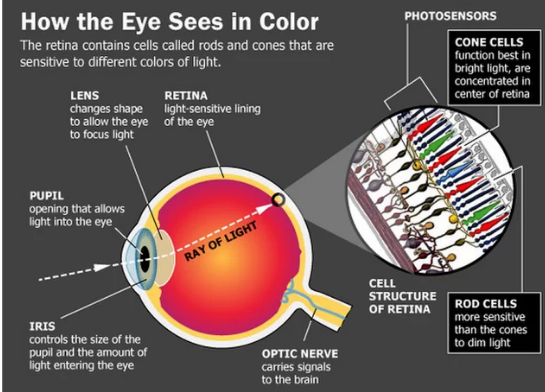How eye sees color {mystery}
thanks to specialized cells in our eyes called cones.When light hits an object – say, a banana – the object absorbs some of the light and reflects the rest of it. Which wavelengths are reflected or absorbed depends on the properties of the object. When you look at a banana, the wavelengths of reflected light determine what color you see. The light waves reflect off the banana's peel and hit the light-sensitive retina at the back of your eye. That's where cones come in.
Humans, with our three cone types, are better at discerning color than most mammals, but plenty of animals beat us out in the color vision department. Many birds and fish have four types of cones, enabling them to see ultraviolet light, or light with wavelengths shorter than what the human eye can perceive.
Some insects can also see in ultraviolet, which may help them see patterns on flowers that are completely invisible to us. To a bumblebee, those roses may not be so red after all.
